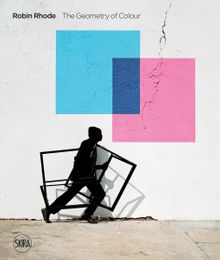ARTIST MONOGRAPHS
|
|
in stock $40.00 Free Shipping UPS GROUND IN THE CONTINENTAL U.S. |
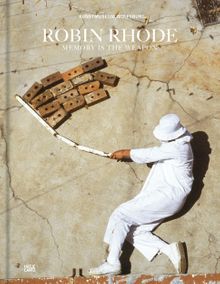 Robin Rhode: Memory Is the Weapon
Robin Rhode: Memory Is the Weapon
Published by Hatje Cantz.
Edited with text by Uta Ruhkamp. Foreword by Andreas Beitin. Text by Don Mattera, James Matthews, Robin Rhode, Gladys Thomas.
South African artist Robin Rhode’s (born 1976) trademark material is the wall. Influenced by urban music culture, film, popular sports, youth culture and traditional South African storytelling, his works are created on public walls. Rhode’s concern is not with the finished visual statement left behind on the street, however, but the process itself. Consequently, in his visual short stories, he captures the overlap between drawing, performance and sculpture, step by step. With drawing as his starting point, Rhode develops increasingly complex photographic works, digital animations, performances, sculptures and works on paper, which comprise a balancing act between South African history, culture, signs and codes, and the abstract language of European American art history.
Alongside reproductions of the art itself, Memory Is the Weapon also contains an interview, an introductory essay and poems by South African authors to whom his work often refers.
PUBLISHER
Hatje Cantz
BOOK FORMAT
Hardcover, 9.5 x 12.25 in. / 224 pgs / 250 color.
PUBLISHING STATUS
Pub Date 11/26/2019
Active
DISTRIBUTION
D.A.P. Exclusive
Catalog: FALL 2019 p. 161
PRODUCT DETAILS
ISBN 9783775746052 TRADE
List Price: $62.00 CAD $88.00
AVAILABILITY
In stock
in stock $62.00 Free Shipping UPS GROUND IN THE CONTINENTAL U.S. |
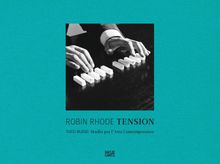 Robin Rhode: Tension
Robin Rhode: Tension
Published by Hatje Cantz.
Text by Andrea Bellini, Michele Robecchi.
PUBLISHER
Hatje Cantz
BOOK FORMAT
Hardcover, 12 x 9 in. / 232 pgs / 450 color.
PUBLISHING STATUS
Pub Date 9/27/2016
Active
DISTRIBUTION
D.A.P. Exclusive
Catalog: FALL 2016 p. 95
PRODUCT DETAILS
ISBN 9783775741606 TRADE
List Price: $75.00 CAD $99.00
AVAILABILITY
Out of stock
STATUS: Out of stock Temporarily out of stock pending additional inventory. |
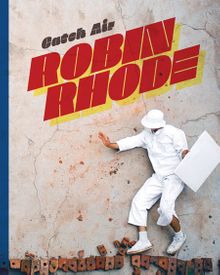 Robin Rhode: Catch Air
Robin Rhode: Catch Air
Published by Wexner Center for the Arts.
Text by Catharina Manchanda, Claire Tancons. Foreward by Sherri Geldin.
PUBLISHER
Wexner Center for the Arts
BOOK FORMAT
Paperback, 8.5 x 11 in. / 48 pgs / 16 color / 34 bw.
PUBLISHING STATUS
Pub Date 9/30/2009
Out of print
DISTRIBUTION
D.A.P. Exclusive
Catalog: FALL 2009 p. 89
PRODUCT DETAILS
ISBN 9781881390473 TRADE
List Price: $29.95 CAD $39.95 GBP £27.00
AVAILABILITY
Not available
STATUS: Out of print | 00/00/00 For assistance locating a copy, please see our list of recommended out of print specialists |
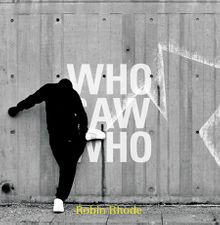 Robin Rhode: Who Saw Who
Robin Rhode: Who Saw Who
Published by Hayward Gallery Publishing.
Text by Michele Robecchi, Stephanie Rosenthal, James Sey.
PUBLISHER
Hayward Gallery Publishing
BOOK FORMAT
Hardcover, 8.75 x 8.75 in. / 120 pgs / 87 color / 101 bw.
PUBLISHING STATUS
Pub Date 2/1/2009
Out of print
DISTRIBUTION
D.A.P. Exclusive
Catalog: SPRING 2009 p. 95
PRODUCT DETAILS
ISBN 9781853322716 TRADE
List Price: $40.00 CAD $54.00
AVAILABILITY
Not available
STATUS: Out of print | 00/00/00 For assistance locating a copy, please see our list of recommended out of print specialists |
 Robin Rhode: Walk Off
Robin Rhode: Walk Off
Published by Hatje Cantz.
Edited by Stephanie Rosenthal. Text by Stephanie Rosenthal, Thomas Boutoux, André Lepecki.
PUBLISHER
Hatje Cantz
BOOK FORMAT
Hardcover, 12 x 9 in. / 208 pgs / 550 color.
PUBLISHING STATUS
Pub Date 11/1/2007
Out of print
DISTRIBUTION
D.A.P. Exclusive
Catalog: FALL 2007
PRODUCT DETAILS
ISBN 9783775720694 TRADE
List Price: $55.00 CAD $65.00
AVAILABILITY
Not available
STATUS: Out of print | 00/00/00 For assistance locating a copy, please see our list of recommended out of print specialists |

